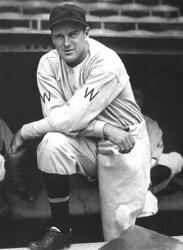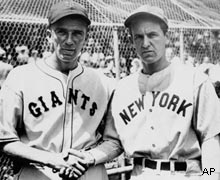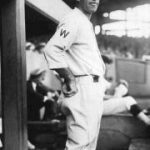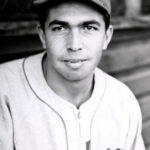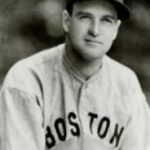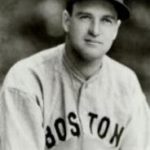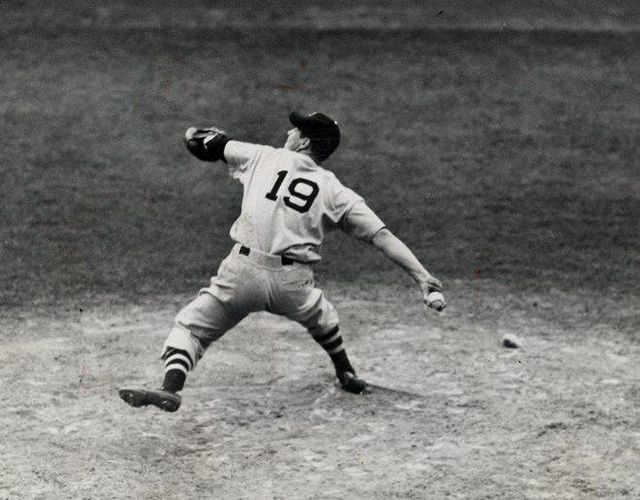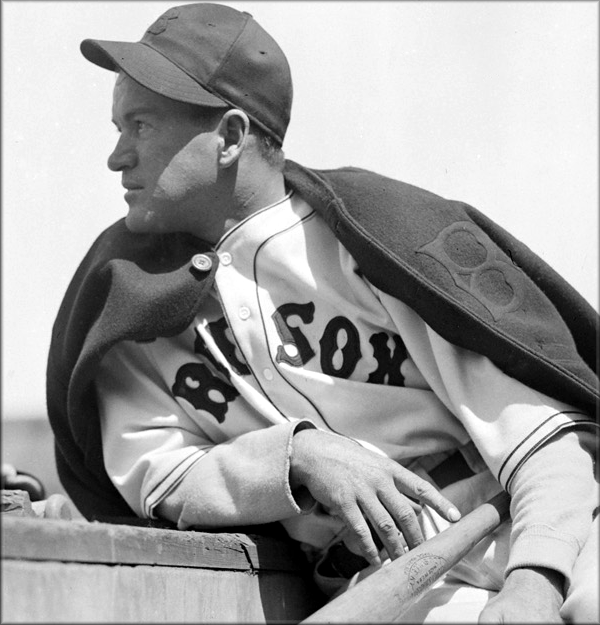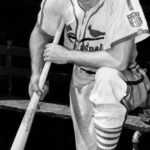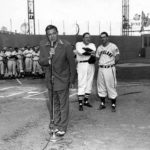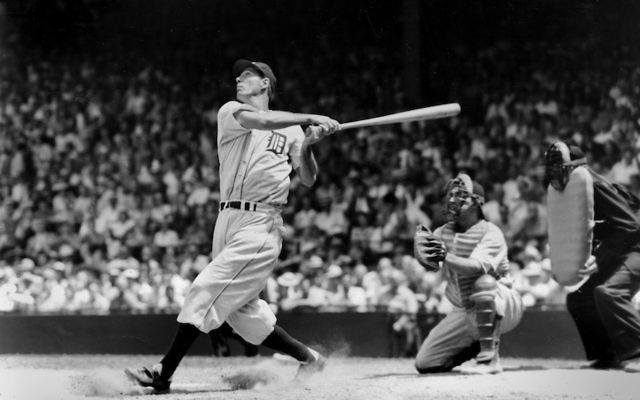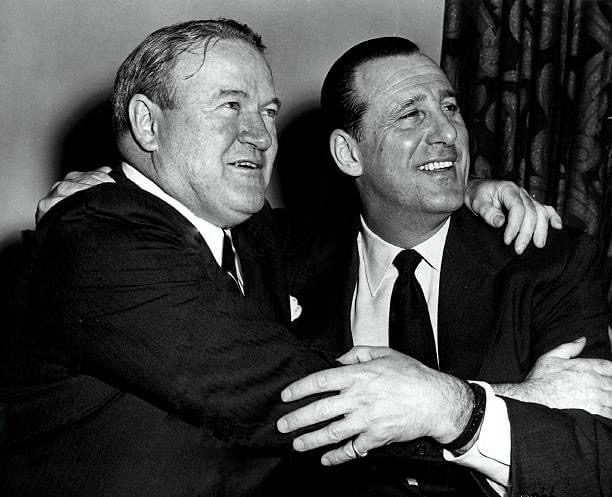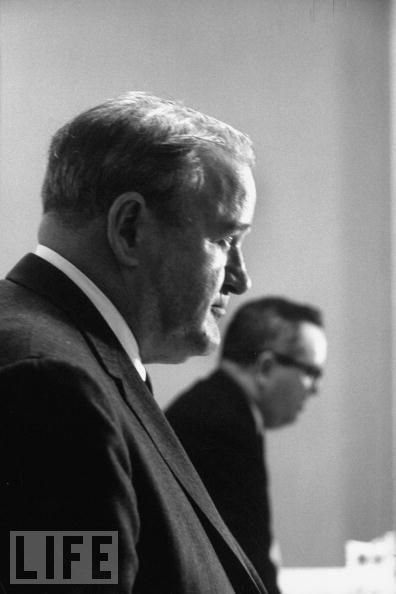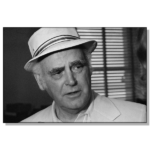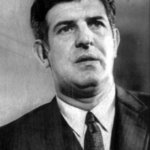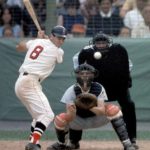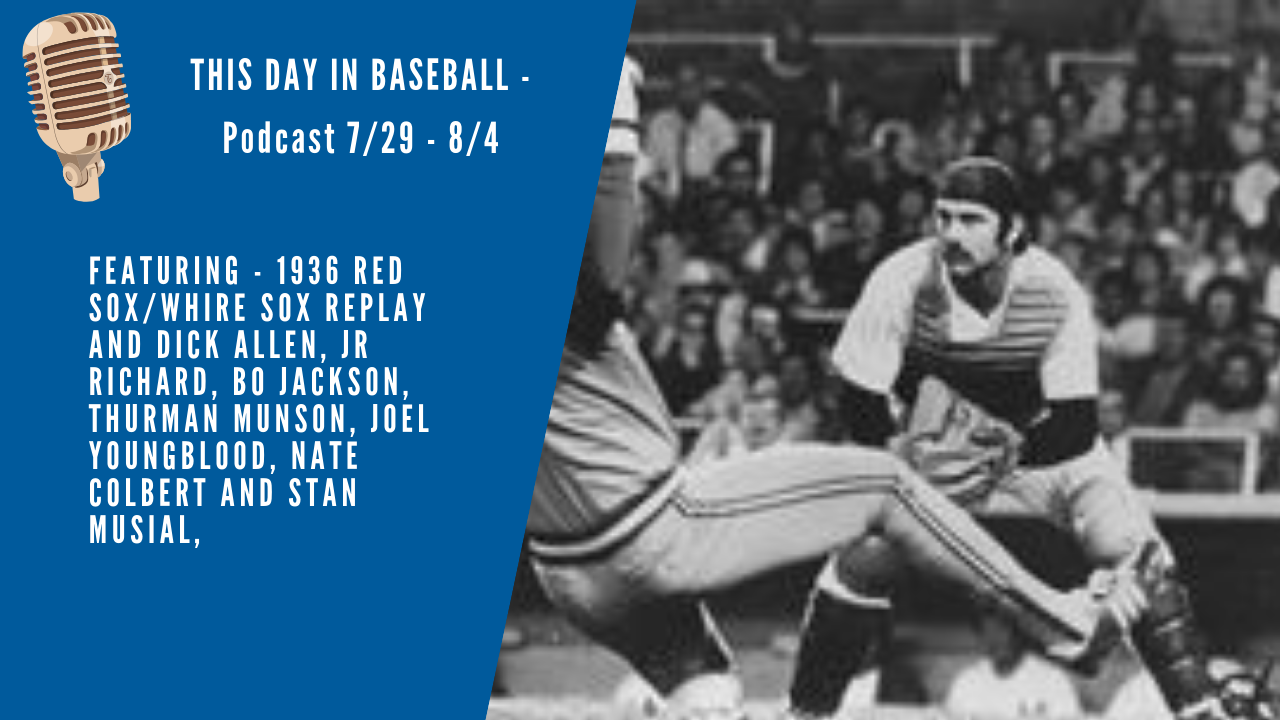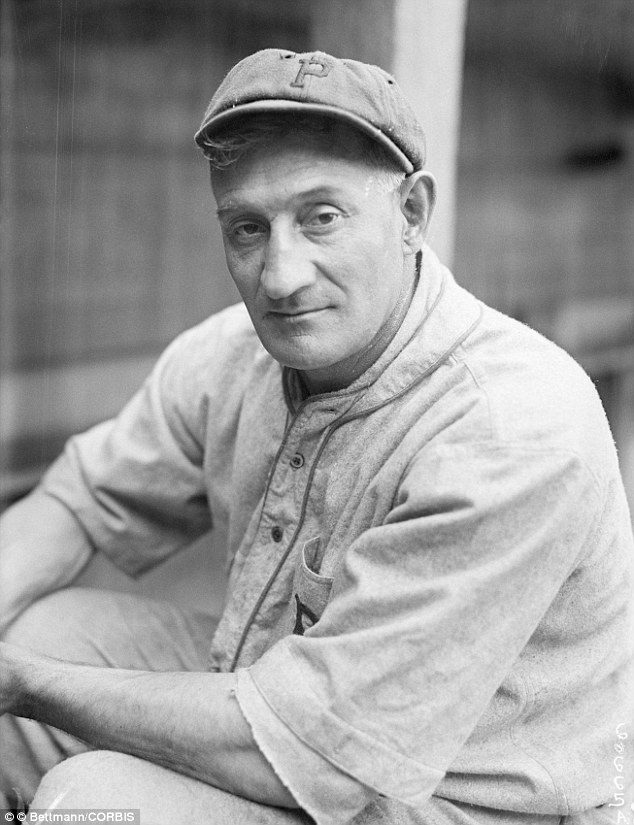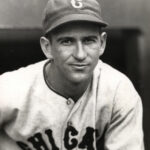Joe Cronin Stats & Facts
Joe Cronin
Position: Shortstop
Bats: Right • Throws: Right
5-11, 180lb (180cm, 81kg)
Born: October 12, 1906 in San Francisco, CA
Died: September 7, 1984 in Barnstable, MA
Buried: St. Francis Xavier Cemetery, Centerville, MA
High School: Sacred Heart Cathedral Preparatory (San Francisco, CA)
Debut: April 29, 1926 (5,651st in MLB history)
vs. CIN 0 AB, 0 H, 0 HR, 0 RBI, 0 SB
Last Game: April 19, 1945
vs. NYY 2 AB, 0 H, 0 HR, 0 RBI, 0 SB
Hall of Fame: Inducted as Player in 1956. (Voted by BBWAA on 152/193 ballots)
View Joe Cronin’s Page at the Baseball Hall of Fame (plaque, photos, videos).
Full Name: Joseph Edward Cronin
View Player Bio from the SABR BioProject
Nine Players Who Debuted in 1926
Mel Ott
Paul Waner
Joe Cronin
Tony Lazzeri
General Crowder
Babe Herman
Ethan Allen
Bump Hadley
Ski Melillo
The Joe Cronin Teammate Team
C: Muddy Ruel
1B: Jimmie Foxx
2B: Bobby Doerr
3B: Pie Traynor
SS: Johnny Pesky
LF: Ted Williams
CF: Sam Rice
RF: Paul Waner
SP: Lefty Grove
SP: General Crowder
SP: Earl Whitehill
SP: Wes Ferrell
RP: Firpo Marberry
M: Walter Johnson
Notable Events and Chronology for Joe Cronin Career
One of the finest shortstops in American League history, Joe Cronin actually had four careers in major league baseball. After excelling at shortstop for the Washington Senators from 1928 to 1934, Cronin assumed the responsibilities of player-manager for the Boston Red Sox for the next 11 seasons. Retiring as an active player in 1945, Cronin remained Red Sox manager until he succeeded Eddie Collins as the team’s general manager at the conclusion of the 1947 campaign. Cronin continued in that post through mid-January 1959, when he was elected president of the American League, a position he held for the next 15 years. In all, Cronin spent more than 50 years in major league baseball in one capacity or another, making him one of the most distinguished members of the Baseball Hall of Fame.
Born in the Excelsior district of San Francisco on October 12, 1906, Joseph Edward Cronin attended nearby Sacred Heart Cathedral High School, from which he graduated in 1924. After working briefly as a bank clerk, the 18-year-old Cronin signed a free agent contract with the Pittsburgh Pirates the following year. He came up to the Pirates as a slow and clumsy shortstop in 1926 but saw little playing time since hard-hitting Glenn Wright was firmly entrenched at the position for Pittsburgh. Cronin spent much of the next two seasons bouncing back and forth between the Pirates bench and the team’s minor league affiliate in Kansas City, before being discovered by Washington Senators scout Joe Engel. Engel, who also managed the Chattanooga Lookouts at Engel Stadium, later said that when he first spotted Cronin playing in Kansas City, “I knew I was watching a great player. I bought Cronin at a time he was hitting .221. When I told Clark Griffith (owner of the Washington Senators) what I had done, he screamed, ‘You paid $7,500 for that bum? Well, you didn’t buy him for me. You bought him for yourself. He’s not my ballplayer – he’s yours. You keep him and don’t either you or Cronin show up at the ballpark.'”
Griffith eventually had a change of heart, with Cronin finally being called up by the Senators midway through the 1928 campaign. Assuming the team’s starting shortstop job during the season’s second half, Cronin batted a mere .242 and committed 16 errors in the 63 games in which he appeared. The 22-year-old shortstop’s defensive struggles continued the following season when he committed a league-leading 62 miscues. Yet Cronin showed promise at the plate, improving his batting average to .281.
The righthanded hitting Cronin had his breakout season in 1930, batting .346 and finishing among the league leaders with 126 runs batted in, 127 runs scored, 203 hits, and 17 stolen bases. His defense also improved considerably. In addition to reducing his error-total to 35, Cronin led all American League shortstops in assists, while also topping all players at his position in putouts for the first of three consecutive times. Although a formal Most Valuable Player Award was not presented in either league that year, Cronin’s outstanding performance earned him recognition as the “unofficial” A.L MVP, as selected by The Sporting News.
Cronin had another outstanding season for Washington in 1931, batting .306, scoring 103 runs, and placing near the top of the league rankings with 126 runs batted in, 13 triples, and 44 doubles, en route to earning a seventh-place finish in the official A.L.
MVP voting. Cronin finished in the top ten in the balloting again the following year when he batted .318, knocked in 116 runs, scored 95 others, and led the league with 18 triples.
Only Jimmie Foxx’s triple crown performance prevented Cronin from capturing league MVP honors in 1933. After assuming managerial duties for his team prior to the start of the season, Cronin led the Senators to the American League pennant by batting .309, driving in 118 runs, scoring 89 others, and topping the circuit with 45 doubles. In addition to finishing second in the MVP voting to Foxx, Cronin made his first of seven All-Star Game appearances at shortstop for the American League.
Early in 1934, Washington owner Clark Griffith (the same man who once called Cronin a “bum”) introduced his young manager to his niece, Mildred Robertson, then a club secretary. Cronin and Robertson were married later that year, which turned out to be the shortstop’s final one in Washington. In an ironic twist, Griffith sold his new nephew to the Boston Red Sox for the then-enormous sum of $225,000 at the end of the 1934 season. Although he parted ways with his newest family member, Griffith made certain that his niece and Cronin were well provided for, arranging for the new Boston player-manager to receive a five-year contract good for $50,000 per year.
Cronin enjoyed playing in his new surroundings. He frequently drove balls off and over Fenway Park’s short leftfield wall, improving his power numbers dramatically during his time in Boston. After never having hit more than 13 home runs at Washington’s spacious Griffith Stadium, Cronin surpassed 15 homers five times in his six full seasons at Fenway, including a career high 24 long balls in 1940. He also batted over .300 four times, topped 100 runs batted in three times, surpassed 100 runs scored twice, and led the American League with 51 doubles in 1938, when he also placed among the league leaders with a .325 batting average.
After batting .311, hitting 16 homers, and knocking in 95 runs in 1941, the 35-year-old Cronin took himself out of the starting lineup the following year to make room at shortstop for young Johnny Pesky. Cronin remained an extremely effective bench player for Boston until early in 1945, when he broke his leg, ending his playing career for good.
Cronin retired from the game with 170 home runs, 1,424 runs batted in, 1,233 runs scored, 2,285 hits, and a .301 lifetime batting average. He batted over .300 a total of 11 times, knocked in more than 100 runs eight times, scored more than 100 runs and finished in double-digits in triples four times each, and topped 40 doubles six times. In addition to being selected to seven All-Star teams, Cronin finished in the top ten in the league MVP voting on five separate occasions.
Serving his team for the first time solely as a manager, Cronin piloted the Red Sox to the World Series in 1946, one they lost to the St. Louis Cardinals in seven games. He moved into the Boston front office two years later, spending the next 11 years running the team’s operation as its general manager and being elected to the Hall of Fame primarily on the merits of his playing career in 1956. Cronin drew a considerable amount of criticism during his tenure as Red Sox GM for his apparent lack of interest in integrating the team’s roster (he once passed on signing a young Willie Mays, and he never traded for an African-American player). The failure of the Red Sox to keep up with the times led to a slow decline in the team’s performance during the 1950s, one that continued well after Cronin left Boston at the end of the 1958 campaign to assume the duties of American League President. (Pumpsie Green coincidentally became the first African-American to wear a Red Sox uniform six months after Cronin relinquished his position as club GM).
Cronin remained A.L. President for 15 years, presiding over the league’s expansion from eight to ten teams in 1960, then to 12 teams in 1969, during his two terms in office.
In his final year as president, he blocked George Steinbrenner’s attempt to lure Dick Williams away from Oakland to be his manager, while simultaneously allowing the Tigers to sign Ralph Houk away from Steinbrenner’s Yankees.
After being succeeded as American League President by Lee MacPhail in 1973, Cronin retired to Osterville, Massachusetts, where he spent the next 11 years before passing away at the age of 77 on September 7, 1984.
The many hats Joe Cronin wore during his half-century in baseball have obscured to some extent the degree to which he excelled as a ballplayer. Consider, though, that Cronin’s .468 career slugging percentage places him second only to Ernie Banks among shortstops with at least 5,000 at bats. His 170 career home runs were the most by any player at the position during the first half of the 20th century, and his 1,424 runs batted in and 515 doubles were second only to Honus Wagner.
Connie Mack, for one, certainly appreciated Cronin’s playing ability. The legendary manager of the Philadelphia Athletics once responded to a question about the shortstop by saying, “Oh my yes, Joe is the best there is in the clutch. With a man on third and one out, I’d rather have Cronin hitting for me than anybody I’ve ever seen.”
@ET-DC@eyJkeW5hbWljIjp0cnVlLCJjb250ZW50IjoicG9zdF90YWdzIiwic2V0dGluZ3MiOnsiYmVmb3JlIjoiTGVhcm4gTW9yZSBhYm91dCB0aGUgdGVhbXMsIHBsYXllcnMsIGJhbGwgcGFya3MgYW5kIGV2ZW50cyB0aGF0IGhhcHBlbmVkIG9uIHRoaXMgZGF0ZSBpbiBoaXN0b3J5IC0gLSAtIC0gLSAtIC0gIiwiYWZ0ZXIiOiIiLCJsaW5rX3RvX3Rlcm1fcGFnZSI6Im9uIiwic2VwYXJhdG9yIjoiIHwgIiwiY2F0ZWdvcnlfdHlwZSI6InBvc3RfdGFnIn19@
Factoids, Quotes, Milestones and Odd Facts
Played For
Pittsburgh Pirates (1926-1927)
Washington Senators (1928-1934)
Boston Red Sox (1935-1945)
Managed
Washington Senators (1933-1934)
Boston Red Sox (1935-1947)
Best Season, 1930
Cronin batted .346 with a .422 OBP and .513 SLG (this is when shortstops had names like Rabbit and Sparky and were not expected to bat anywhere but 8th). He laced 203 hits, scoring 127 runs, driving in 126 (he topped the century mark in ribbies eight times, including 5 straight seasons from 1930-34). Cronin wasn’t the fastest shortstop but he fielded his position well.
Post-Season Appearances
1933 World Series
Description
Cronin was a fiesty leader, moody at times. He was also very sensitive, especially concerning his throwing problems early in his career. Aggresive, Cronin was scrappy, had an untamed temper, and hated the Yankees. In a celebrated fight in May of 1938, Cronin intercepted Yankee Jake Powell as the latter was charging the mound to confront red Sox hurler Archie McKain (McKain had unsuccessfully aimed for Powell’s head before plunking the Yank in the stomach with one of his fastballs). Cronin and Powell tussled in the middle of the diamond and after both wrere ejected from the game, they resumed their hostilities under the Yankee Stadium stands. According to reports, Cronin received the worst of it, including several cuts to the face, but with several Yankees surrounding the two, Joe was outnumbered.
Hitting Streaks
22 games (1932)
22 games (1932)
20 games (1930)
20 games (1930)
Transactions
October 26, 1934: Traded by the Washington Senators to the Boston Red Sox for Lyn Lary and $225,000 cash; June 6, 1946: Released by the Boston Red Sox.
It’s worth noting that Cronin was married to Washington owner Calvin Griffith’s niece when he was traded to the Red Sox. That must have resulted in an interesting Thanksgiving.
All-Star Selections
1933 AL
1934 AL
1935 AL
1937 AL
1938 AL
1939 AL
1941 AL
Replaced
He beat out Bobby reeves, another young shortstop, for the Senators’ shortstop job in 1928.
Replaced By
Johnny Pesky
Best Strength as a Player
Hitting for average.
Largest Weakness as a Player
His throwing arm was erratic and he was almost always among league leaders in errors at shortstop.
Other Resources & Links


